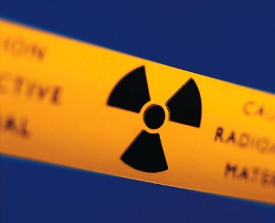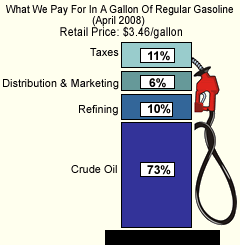 Is Radon Lurking in Your Home?
Is Radon Lurking in Your Home?
By: Stephanie | September 05, 2008 | Category: Health
 Did you know that the number one cause of lung cancer among nonsmokers may be lurking in your home? The culprit—elevated levels of radon—is estimated to be found in nearly one out of every 15 homes in the United States, according to the U.S. Environmental Protection Agency (EPA). Some 20,000 people will die this year due to breathing too much radon without
even knowing it. Among smokers, radon is the second leading cause of lung cancer.
Did you know that the number one cause of lung cancer among nonsmokers may be lurking in your home? The culprit—elevated levels of radon—is estimated to be found in nearly one out of every 15 homes in the United States, according to the U.S. Environmental Protection Agency (EPA). Some 20,000 people will die this year due to breathing too much radon without
even knowing it. Among smokers, radon is the second leading cause of lung cancer.
Radon is a naturally occurring radioactive gas found in nearly all soils. It can leak through cracks into your home, where it can get trapped and build up. You can't see radon, and you can't smell or taste it. Any home can have a radon problem—new and old homes, well-sealed and drafty homes, and homes with or without basements.
The EPA and the Surgeon General of the United States have recommended that all houses be tested for radon. I thought that my house had a radon tester, but while researching this post, I learned that it’s just a monitor—which sports the recommendation to test for radon every two years.
Luckily, many states offer free or discounted radon test kits; you can check your state’s program on EPA’s map. Radon test kits are also available by calling 1-800-SOS-RADON (1-800-767-7236), and from some local or state American Lung Associations and home improvement stores.
If you have elevated levels of radon in your home, professionals can help fix the problem, often for about the same cost as other common home repairs.
For more facts on radon, visit EPA's general information, its citizens' guide to radon, and its consumers' guide to radon reduction. Pueblo.gsa.gov also offers information on the deadly gas, and the National Institutes of Health and USA.gov offer useful links to more information on radon.
![]()
Permalink
| View Comments [3]
| ![]() E-mail This Entry
| Tags:
gas
home
house
killer
lung_cancer
radioactive
radon
safety
stephanie
test
E-mail This Entry
| Tags:
gas
home
house
killer
lung_cancer
radioactive
radon
safety
stephanie
test

 Just about every morning before starting to work I get on my bicycle and go for a ride. I ride about 5 miles a day, which isn’t very much, but it’s all my schedule allows. Biking is great exercise, helps me manage stress, and strengthens my problem knees.
Just about every morning before starting to work I get on my bicycle and go for a ride. I ride about 5 miles a day, which isn’t very much, but it’s all my schedule allows. Biking is great exercise, helps me manage stress, and strengthens my problem knees.  If you're the kind of person, like my mom, who prefers to do business with the government face to face, you can find links to locate local offices of federal agencies like
If you're the kind of person, like my mom, who prefers to do business with the government face to face, you can find links to locate local offices of federal agencies like 
